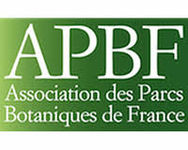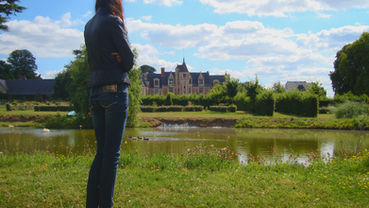 |  |  |  |
|---|---|---|---|
 |  |  |  |
 |  |  |  |
 |  |  |
FRENCH GARDEN
FRENCH FORMAL GARDEN, JARDIN A LA FRANCAISE,
FRENCH GARDEN DESIGN
The art of perspective
The french formal garden is a style of garden based on symmetry and the principle of imposing order on nature. Its epitome is generally considered to be the Gardens of Versailles designed during the 17th century by the landscape architect André Le Nôtre for Louis XIV and widely copied by other European courts.
In France it is known as a Formal garden or classical garden and is an expression of classicism in the art of gardens, that is, the search for formal perfection, a theatrical majesty and a taste for the show.
André Le Nôtre is one of the mythical figures of French history, Landscaper, architect and urban planner, André Le Nôtre became the embodiment of the "French garden", and was the first gardener ennobled.
The revolutionary gardens of André le Nôtre
The classic "French" gardens of André le Nôtre are inspired by Italian gardens, enclosed, delimited by a wall, with carved bushes, fountains, statues. But in addition, AndréLe Nôtre conquered the space - played with the perspectives, created flower beds, fountains, canals, ponds and forests with a grace and majesty unknown until then. In his parks he invents tours full of surprises.
The French gardens created by André le Nôtre are characterized by a principle of symmetry to equal perfection, are staggered in horizontal terraces so that the flower beds could be seen from the highest parts.
André Le Nôtre creates an image of an organized, hierarchical and codified nature. Before, nature was hostile, chaotic, but in the 17th century an idea of a principle of order applied to the universe reigns, and André Le Nôtre is the first to organize space on a large scale: the great axis of composition of Versailles measures 12 kilometers long, something never seen before in Europe. He applied gigantism to the gardens and the landscape visible to the horizon, which is the most impressive of the French gardens of André Le Nôtre.
On the other hand, André Le Nôtre transformed nature into scenery, the french gardens change little with the passing of the seasons, and they have few flowers, since in the 17th century they were scarce and highly appreciated, but the flower beds are authentic masterpieces, carved with different shapes with a unique mastery, the famous broderies or decorative lace formed by trimmed hedges that form drawings.
André Le Nôtre and his architectural conception of the landscape of a french Garden
The beginnings of André Le Nôtre were in the Tuileries and the Palais-Royal, but he completed his apprenticeship with an artistic background in Simon Vouet's workshop in the Louvre, acquiring practical knowledge of the techniques of his time.
He was the one who founded the profession of landscape architect, interested in building majestic avenues, planting water beds in the perspective axis, designing fountains.
André Le Nôtre was the first to have conceived or supervised, both the structure of a park as a whole and the detail of the beds or constructions, providing new solutions to the vast manorial domains and the organization of the territory.
But his art crossed borders and he is credited with numerous regular-style gardens built from the end of the seventeenth century in different parts of Europe, and today is still a model and a reference for landscape designers.
In 1661 The king of France Louis XIV entrusted André Le Nôtre with the creation of the gardens of Versailles, which he considered just as important as the Palace.
The work on the gardens was started at the same time as the work on the palace and lasted for 40 or so years.
During this time André Le Nôtre collaborated with the likes of Jean-Baptiste Colbert, Super intendant of Buildings to the King from 1664 to 1683, who managed the project, and Charles Le Brun, who was made First Painter to the King in January 1664 and provided the drawings for a large number of the statues and fountains.
Creating the french gardens was a monumental task. Large amounts of soil had to be shifted to level the ground, create parterres, build the Orangery and dig out the fountains and Canal in places previously occupied solely by meadows and marshes. Trees were brought in from different regions of France. Thousands of men, sometimes even entire regiments, took part in this immense project.
Each project was reviewed by the King Louis XIV himself, who was keen to see “every detail”. Not long after, the architect Jules Hardouin - Mansart, having been made First Architect to the King and Super intendant of Buildings, built the Orangery and simplified the outlines of the Park, in particular by modifying or opening up some of the groves.
To maintain the design, the french garden needed to be replanted approximately once every 100 years. Louis XVI did so at the beginning of his reign, and the undertaking was next carried out during the reign of Napoleon III.
"There is no French garden without the Authentic Jardinier du Roi versailles planter boxes.
Just imagine your own french formal garden like the Versailles garden.
The versailles planter boxes are the symbol of beauty, perfection, strength and luxury, since ancient times.
Our versailles planter boxes will give to your french garden the touch of color and excellence for your home, or business, simply magnificent"
FRENCH GARDEN PLANTER BOXES
made by JARDINIER DU ROI
french garden, french formal garden, french garden design, jardin a la francaise, classic french garden, french garden design photos, gardens of versailles, versailles gardens, palace of versailles gardens, gardens at versailles, the gardens of versailles, french planters, extra large planters, orange tree planter, topiary tree planter, garden outdoor planters, outdoor planter boxes, wooden planter box, Jardinier Du Roi, planter box, jardinieres, andre le notre, caisse a oranger, versailles planters, château de versailles
THE AUTHENTIC FRENCH GARDEN PLANTER BOXES
Authentic French garden planter boxes are Inspired by the work of André Le Nôtre, gardener of the King Louis XIV of France, this beautiful gardens of versailles planter boxes from L'Orangerie from the palace of Versailles are perfect for topiaries and small trees.
The original French garden planter boxes were created in 17th century owes its reputation to its superior quality materials and unique technical specifications, resulting in an entirely French-made art-craftsmanship piece.
The first original French garden planter boxes also know as Versailles planters or french planters were invented during the 17th century by La Quintinie and André Le Nôtre, the gardener of King Louis XIV for the château of Versailles, located 25km to the south west of Paris.
At that time exotic fruits were brought from abroad to Versailles, and as the plants were sensitive to the harsh winter weather in Versailles, a large space covered named orangery was built capable of containing thousands of the most exotic trees, like citrus trees and palm trees, where they will be moved to the Orangerie to spend the winter season, from November to April.
Instead of stressing the plants and trees by transplanting several times a year from the gardens to the orangery, by planting and replanting these trees two times a year, André Le Nôtre invented a portable french country planter where the trees could remain permanently all year long.
Due to the harsh climate in France and also due to the heavy weight of the trees, the orange tree planter boxes or french country planters were manufactured with an exceptional solidity, as we still do, our french country planter are even stronger than in 17th century because we are using 21st century materials much more stronger and lighter with an improved ability to withstand the harshest weather conditions.
We are proud to manufacture and sell to the United States as well as worldwide the Authentic Jardinier du Roi, the French garden planter boxes or French planters, also know as Versailles planters or Château de Versailles tree-boxes.
These beautiful French garden planter boxes beautify the facades and gardens of all kind of properties, castles, chateaux, prestigious homes grand hotels and boutiques all around the world.
Legal Notice: All brand names, photos, videos, trademarks, and registered trademarks mentioned in this blog - website are property of their legal owners and are being used here only for description.
Just a few example videos about French Gardens from France, inspiring places to visit and see, amazing gardens, dream Chateaux
and more...
Links about the most beautiful chateaux and gardens from france
LINKS OF INTEREST & PARTNERS ABOUT
FRENCH CHATEAUX GARDENS

French parcs garden and heritage associations Associations françaises des parcs, jardins et patrimoine
LINKS OF INTEREST ABOUT
FRENCH GARDENING & HERITAGE PARTNERS

A few snapshots from France, inspiring places to visit and see, amazing gardens, dream Chateaux hotels, beautiful tiny villages, and more...
 |  |  |  |
|---|---|---|---|
 |  |  |  |
 |  |  |  |
 |  |

The prices of our FRENCH GARDEN PLANTER BOXES are in U$S dollars, we ship worldwide door to door delivery by Fedex, also includes SALES TAX, VAT or TVA, and also includes FREE customs taxes up to 98%

















































































